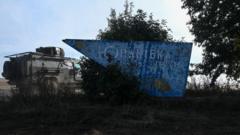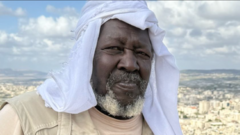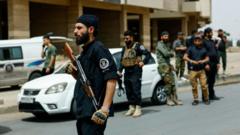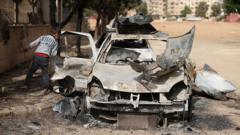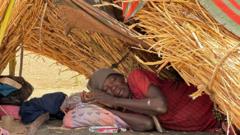Amid ongoing sectarian violence in Syria, an arrest reveals complex interactions between armed civilians and government forces. Survivors recount harrowing tales of attacks on Alawite civilians, with pro-government groups allegedly implicated in summary executions. Human rights agencies call for accountability and protection for vulnerable communities.
Sectarian Violence in Syria: Government Forces Under Scrutiny as Civilians Bear the Brunt
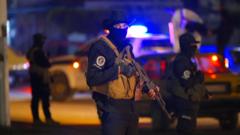
Sectarian Violence in Syria: Government Forces Under Scrutiny as Civilians Bear the Brunt
An alleged participant in the recent sectarian violence against the Alawite community claims he was guided by government forces, raising questions about official complicity in the unrest.
In Latakia's coastal region, the specter of sectarian violence continues to cast a long shadow over Syria, especially among the Alawite minority. In a shocking revelation, a man known as Abu Khalid, accused of participating in lethal attacks against Alawites, disclosed in an interview with the BBC that he and other armed civilians were monitored and managed by government forces during operations in the area two months ago.
Describing his involvement in the conflict, Abu Khalid said he traveled to the coastal village of Sanobar on March 7, 2023, under the guidance of the General Security department, who instructed them to avoid harming civilians. Despite these claims, he filmed himself shooting 64-year-old Mahmoud Yousef Mohammed, claiming the man was an armed combatant. However, evidence from the video contradicts his narration, provoking further scrutiny of the violence that has targeted the Alawite community.
Reports indicate that nearly 900 Alawite civilians have been killed by pro-government forces across Syria's coastline in early March, amidst a period of intense unrest exacerbated by attacks from former regime loyalists. While the Alawites, constituting roughly 10% of the nation’s populace and followers of an offshoot of Shia Islam, have long faced persecution, this latest wave of violence has raised fears of ethnic cleansing.
Witnesses provide distressing accounts of armed groups storming into the village during the recent violence, leading to widespread summary executions and destruction. Sanobar has become emblematic of the ongoing conflict, with nearly 200 inhabitants reportedly killed and the remaining residents too fearful to conduct funerals or openly discuss the events.
Human rights organizations like Amnesty International have called for thorough investigations into the atrocities committed, denouncing a pattern of retaliation that has compounded the cycle of violence. Eyewitnesses recounted the harrowing fates of their loved ones, often faced with lethal interrogations solely based on sectarian identity.
As the Syrian state grapples with the remnants of its repressive past, new President Ahmed al-Sharaa has promised accountability for the violence while asserting that the state must regain control over its military and militia forces. His government’s ability to provide protection and justice for the remaining minority populations will critically shape the post-conflict landscape of Syria.
Yet, amid the promises of reform and justice, many Alawite communities remain vigilant, recalling not only the fresh wounds of the recent violence but also the long history of oppression faced since the civil war began. Their experiences reflect the broader sectarian fault-lines that threaten stability in a country still reeling from years of conflict and collective trauma.



